Boeing collaborates with Air India Engineering Services for MRO services of B777 VVIP aircraft
Radhika Bansal
12 May 2022
Boeing and soon to be privatised Air India Engineering Services Limited (AIESL) on Tuesday, May 10 announced a collaboration for the maintenance, repair and overhaul (MRO) of two custom-made B777 aircraft that are used for the travel of the president, the vice-president and the prime minister.
Boeing collaborates with Air India Engineering Services for MRO services of B777 VVIP aircraft
The collaboration between the two companies would also support the Indian Navy’s growing P-8I fleet, their joint statement said. The collaboration would help build indigenous MRO capabilities as it would bring the P-8I landing gear repair and overhaul work to India for the first time, the statement added.
"Our planned collaboration with AIESL could position us to provide significant value-add to our defence customers locally by enabling faster turnaround, exceptional operational capability and mission readiness for the Indian armed forces. This is also an important step as part of our commitment to the Government of India’s Aatmanirbhar Bharat vision of making India a regional MRO hub."Surendra Ahuja, Managing Director, Boeing Defence India
The two custom-made VVIP aircraft were delivered by Boeing to the Indian government in October 2020. The IAF pilots operate the plane to fly the aforementioned dignitaries.
“Such collaboration would drive forward our vision for strengthening MRO capabilities in India, for India. We remain excited and committed as we provide critical support to India’s armed forces as part of the Boeing India Repair Development and Sustainment (BIRDS) hub initiative.”Sharad Agrawal, CEO, Air India Engineering Services Limited (AIESL)
The hub, according to the Boeing statement, has growing capabilities in India in the area of heavy maintenance, component repair, training and skilling of MRO maintainers. Boeing through BIRDS will offer “training programmes to increase skilled manpower by developing sub-tier suppliers and medium, small and micro enterprises (MSMEs) to build high-quality MRO capabilities in India".
The collaboration between the two companies would also support the Indian Navy’s growing P-8I fleet
Through its MRO facilities in Delhi, Mumbai, Kolkata, Hyderabad and Thiruvananthapuram, the AIESL offers servicing and maintenance of civilian aircraft operated by domestic and international airlines.
Read next
A plane that drives rather than a car that flies? ASKA collaborates with Tech Mahindra to create the best "Drive n Fly" experience
Prashant-prabhakar
12 May 2022
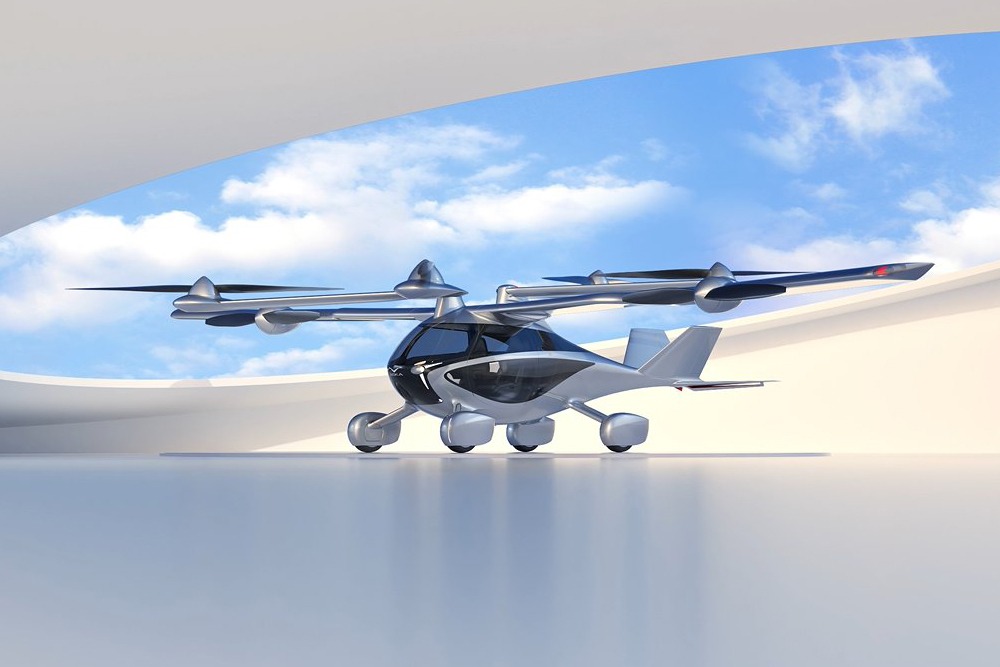
Imagine boarding a "flight" from the comfort of your backyard, or the streets, or the parking lot of a mall. Assuming it could be driven like a car, what if, it could lift off vertically from a designated vertical launch pad and transition into flight mode? What if, once you land at your destination, the "flight" transitions back to being an automobile, and you drive it to your parking spot just like any other car?
Sounds futuristic enough? It is.
That's exactly what ASKA, a California-based company, is working on.
New Atlas
To build a better society and a better economy, we need better transportation solutions, and flying cars will be a part of that equationsaid Maki Kaplinsky, co-founder & chair/COO, NFT inc
Back in 2019, the company had revealed plans of building a flying car that would look like an SUV and could take off using a set of retractable wings. ASKA- Japanese for "flying bird", has hence been working on developing an electric vertical take-off and landing (eVTOL) aircraft with “drive and fly” capabilities.
ASKA-tech and specs
Illustrative | The Times of Israel
Cutting-edge engineering
ASKA features quality details throughout, from a versatile electric and hybrid system to advanced metal materials combined with a carbon fibre structure for certified safety and strength.
Revolutionary aerodynamic design
About the size of a large SUV, the vehicle's design and performance have been validated with CFD and wind tunnel testing. The advanced aerodynamic configuration allows the vehicle to be driven safely on the ground and flies efficiently in the air.
Optimal structural performance, integrity and safety
The wings and arms are equipped with necessary directional stiffness which can contain the deflections as well as dimensional stability required by the control system. The high aspect wing ratio allows the vehicle to have sufficient bending and torsional stiffness to maintain its critical flutter velocity above the designed maximum flight speeds.
Illustrative | askafly.com
The ASKA gains additional safety with a ballistic parachute.
With a capacity of housing 4 people, ASKA's advanced power systems feature an electric power system with range extenders thereby allowing the vehicle to travel as long as 250 miles. The architecture is designed in such a way that it could be extended to any other energy source such as hydrogen.
So. how did this idea come about?
ASKA’s team envisions a future where cars will be used for short trips between 1 to 30 miles, and AAM (Advanced Air Mobility) vehicles will be used for longer trips up to 250 miles, and that's exactly how the concept of a “drive and fly” vehicle came about.
Drive Mode | Illustrative | askafly.com
Apparently, the vehicle can perform a conventional runway take-off and landing as an eSTOL uses between 30% and 60% less energy than the vertical take-off and landing and can clock speeds up to 150 miles per hour.
Flight mode | Illustrative | askafly.com
Since we are targeting everyone as potential customers, the cost of operation is very important. It’s not a toy for billionaires. The STOL functionality makes it more affordable for more people. Guy Kaplinsky, ASKA’s co-founder and CEO
Guy Kaplinsky and Maki Kaplinsky | Urban Air Mobility News
According to Kaplinsky, they aim to improve quality of life because people spend much of their lives in transit—either driving personal vehicles or taking public transportation. And apparently, new-age mobility solutions don't seem to solve the problems of increasing traffic in the either-he stated.
Illustrative | Auto Futures
In February 2022, the company announced it was partnering with India's Tech Mahindra for engineering support that it says will support efforts to certify the ASKA in 2026.
The collaboration aims to solve the worldwide problem of traffic congestion and improve people’s quality of life with what is touted to be the world’s first viable drive & fly eVTOL (Electric drive & fly Vertical Take-off and Landing).
We are confident that our engagement with Tech Mahindra will boost ASKA's development, testing and certification process to meet ASKA's commercialization target by 2026. Tech Mahindra's aim to deliver tomorrow's experiences today, solidly supports our mission to solve the worldwide problem of traffic congestion and improve people's quality of lifeGuy Kaplinsky
ASKA'S envisioned launchpad for VTOL ops has a minimal footprint with an area of 65 feet by 65 feet. This additionally offers the option for operators to drive in or out of the launchpad rather than use extra energy to perform the VTOL function.
One launchpad can reportedly facilitate 80 passengers in an hour, thereby bringing the efficiency to about 3 minutes on average.
The development of drive-and-fly vehicles is an emerging area of innovation globally, which can play a great role in creating best travel experience with minimal infrastructure investments and low environmental impacts. We look forward to creating synergies with ASKA by working on the engineering design and analysis of fly and drive eVTOL and thereby deliver tomorrow's experience today, which forms the core objective of our NXT.NOW strategyLakshmanan Chidambaram- President- Enterprise Americas, Tech Mahindra
Lakshmanan Chidambaram | Source
The team expects to have a full-scale demonstrator ready to begin flight testing by early 2023 and is already performing flight tests with a smaller-scale prototype.
The ASKA is expected to be certified under FAA's Part 23 rules.
ASKA is also participating in NASA’s Advanced Air Mobility (AAM) National Campaign after signing a five-year Space Act Agreement with NASA in 2020.
https://www.youtube.com/watch?v=vL2nUxWGUfM
SOURCE(s)
COVER: eVTOL.news
Read next
9 pilots and 32 cabin crew fail the pre-flight breath analyser test in the last 4 months
Radhika Bansal
11 May 2022
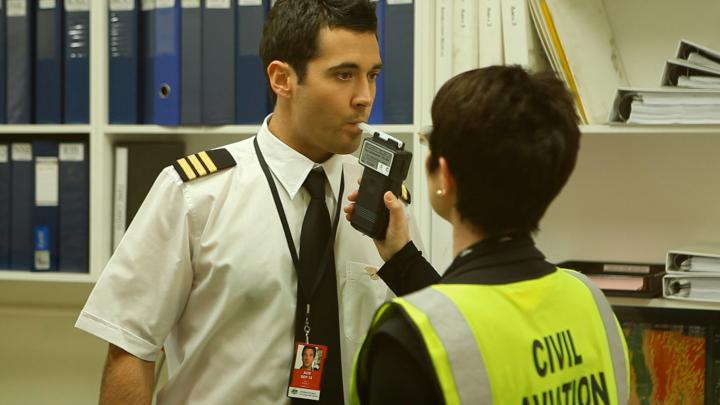
9 pilots and 32 cabin crew members failed their pre-flight alcohol tests between January 1 and April 30, India’s aviation regulator DGCA said on Tuesday, May 10.
"Of them, two pilots and two cabin-crew members have been suspended for three years for being positive for the second time,” the Directorate General of Civil Aviation (DGCA) said in a statement.
The remaining 7 pilots and 30 cabin crew members were suspended for three months as they tested BA (breathalyser) positive for the first time, it added.
Data - DGCA
According to the DGCA, 4 pilots and 10 cabin-crew members of IndiGo, one pilot and five cabin-crew members of Go First, one pilot and six cabin-crew members of SpiceJet, one pilot of Air India Express and four cabin-crew members of AirAsia India failed the pre-flight alcohol tests in the said period.
One pilot and two cabin crew members of Vistara, one pilot of Alliance Air and five cabin crew members of Air India also failed the test, the aviation regulator said.
ALSO READ - DGCA orders pre-flight alcohol tests for 50% of pilots and cabin crew daily
The DGCA had stated in April that airlines must ensure that 50% of their cockpit and cabin crew members are subjected to pre-flight alcohol tests daily.
The DGCA had stated in April that airlines must ensure that 50% of their cockpit and cabin crew members are subjected to pre-flight alcohol tests daily.
Before the outbreak of the COVID-19 pandemic, all crew members were required to undergo pre-flight alcohol tests.
When the pandemic struck, the tests were suspended for a couple of months. Subsequently, the tests were resumed but for only a small percentage of crew members.
ALSO READ - A dozen airport and airlines maintenance staff reported working drunk in India
“DGCA strictly enforced the requirements on the Breath Analyzer testing of the crew for the consumption of the alcohol even during the prevailing pandemic conditions. During the period of four months commencing from January 1, the DGCA has carried out 48 enforcement actions for violations of various requirements of the regulation regarding testing of the crew for the consumption of alcohol.During this period, nine pilots and 32 cabin crew were found BA positive. Out of these, two pilots and two cabin crew have been suspended for a period of three years for bring positive for the second time. The remaining 37 crew members were suspended for a period of three months for being tested BA positive for the first time."DGCA
In addition to the action taken against the 41 crew members (nine pilots and 32 cabin crew members), the DGCA has also acted against seven crew members for “missing BA tests or not furnishing the declaration”.
The regulator last year has levied a financial penalty on two pilot training schools for irregular maintenance of breath analyser equipment. This is the first time the regulator has levied a financial penalty on any aviation entity.
Aviation regulators like DGCA and the Bureau of Civil Aviation Security (BCAS) have got penalising powers after the Aircraft Amendment Bill was approved by both houses of the parliament last year.
Read next
Several flights cancelled due to Cyclone Asani in Chennai and Vishakhapatnam
Radhika Bansal
11 May 2022
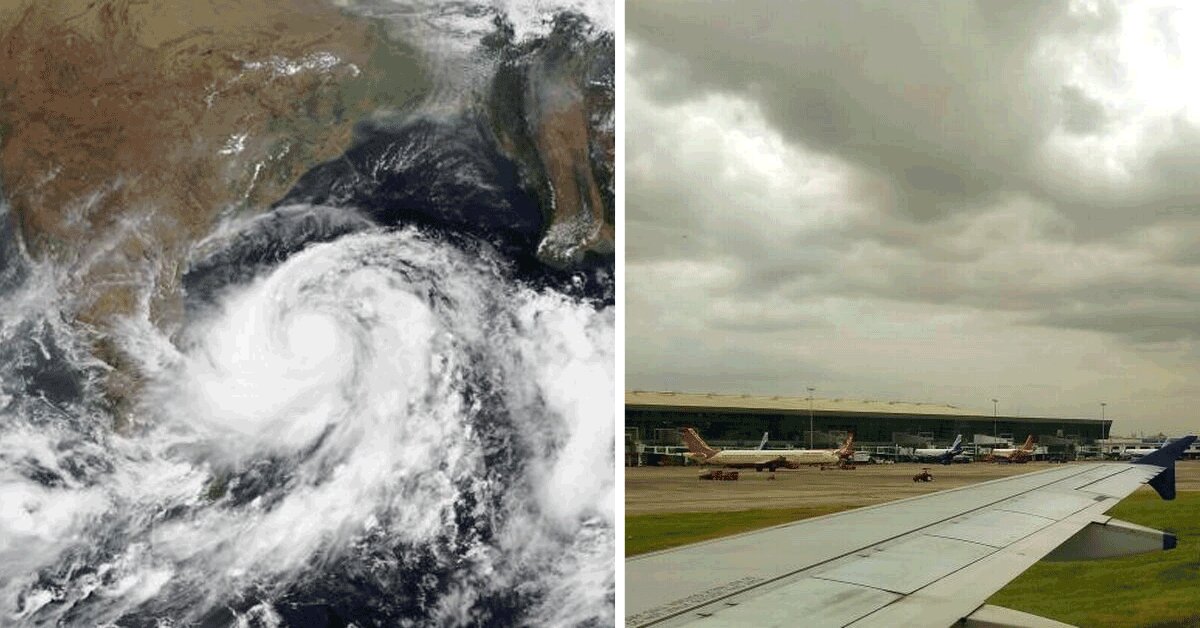
Severe cyclonic storm 'Asani' in the Bay of Bengal has hit flight operations with several airlines cancelling flights in Andhra Pradesh's Visakhapatnam and Tamil Nadu's Chennai on Tuesday, May 10.
The Met Department has predicted light to moderate rainfall across parts of West Bengal, Andhra Pradesh and Odisha with the probability of the severe cyclonic storm 'Asani' recurring.
Visakhapatnam International Airport director Srinivas said that IndiGo has cancelled 23 flights, both arrivals, and departures, citing bad weather. "Four Air Asia flights also stand cancelled due to bad weather at Vizag for the day," he added.
our Air Asia flights also stand cancelled due to bad weather at Vizag for the day
At the Chennai airport, 10 flights including those from Hyderabad, Visakhapatnam, Jaipur and Mumbai have been cancelled. As per the Chennai Airport Authority, cancellation information was conveyed to the passengers.
Duty Officer at the Cyclone Warning Centre of Visakhapatnam, Kumar said that severe cyclonic storm Asis over the west-central region and the adjoining southwest region of Bay of Bengal.
"It is 330 km south-southeast of Visakhapatnam Likely to move further northwest till tonight, thereafter it'll recurve," he added. Further, Kumar informed that rainfall is likely over northern Andhra Pradesh including Srikakulam, Vizianagaram, Visakhapatnam and East Godavari.
Rainfall is likely over northern Andhra Pradesh including Srikakulam, Vizianagaram, Visakhapatnam and East Godavari.
The India Meteorological Department (IMD) on Tuesday, May 10 predicted rainfall and strong winds for three states; Andhra Pradesh, Odisha and West Bengal.
"It is very likely to move nearly northwestwards till May 10 night and reach Westcentral Bay of Bengal off North Andhra Pradesh coast and adjoining Odisha coast. Thereafter, it is very likely to recurve north-northeastwards and move towards Northwest Bay of Bengal off North Andhra Pradesh and Odisha coasts. It is likely to weaken gradually into a Cyclonic Storm during the next the 24 hours.It would gradually decrease becoming 80-90 km per hour gusting to 100 km per hour over Westcentral and adjoining Northwest Bay of Bengal from the evening. Squally wind speed reaching 40-50 kmph gusting to 60 kmph is likely along and off north Andhra Pradesh coast.During the past six hours, the severe cyclonic storm 'Asani', over Westcentral and adjoining southwest Bay of Bengal moved west-northwestwards with a speed of 7 km per hour during past six hours and lay centre today over the west-central and adjoining southwest Bay of Bengal at 330 km southeast of Kakinada (Andhra Pradesh), 350 km south-southeast of Visakhapatnam (Andhra Pradesh), 510 km south-southwest of Gopalpur (Odisha) and 590 km south-southwest of Puri (Odisha)."India Meteorological Department (IMD)
The Met department has predicted light to moderate rainfall at a few places with heavy to very heavy rainfall at isolated places over coastal Andhra Pradesh and heavy rainfall at isolated places is likely over coastal Odisha from today evening.
For tomorrow, May 11, the IMD predicted light to moderate rainfall at a few places with heavy to very heavy rainfall at isolated places over north coastal Andhra Pradesh and heavy rainfall at isolated places is likely over coastal Odisha and adjoining coastal West Bengal.
Gale wind speed reaching 95-105 km per hour gusting to 115 km per hour is prevailing around the system centre over Westcentral and adjoining the southwest Bay of Bengal.
Air India's Delhi-Vishakhapatnam flight in turbulence due to Asani
Passengers of a Delhi-Visakhapatnam Air India flight on Monday, May 9 had a harrowing experience, with many of them continuing to suffer even 24 hours later.
Air India's Delhi-Vishakhapatnam flight ran into turbulence
The trauma for them began when the flight, AI451, which took off at 3 PM from Delhi, had to be diverted without landing at Visakhapatnam due to inclement weather. They were taken to Hyderabad, where they were reportedly told that those who wanted to alight could do so, but the airlines would not be making any alternative arrangement for them to go to Vizag.
When reports last came in, the particular flight was cancelled, though Air India was yet to respond to the tweets from different passengers or pass on any other information.
Read next
Embraer in talks with India for collaboration on its upcoming turboprop aircraft
Radhika Bansal
11 May 2022
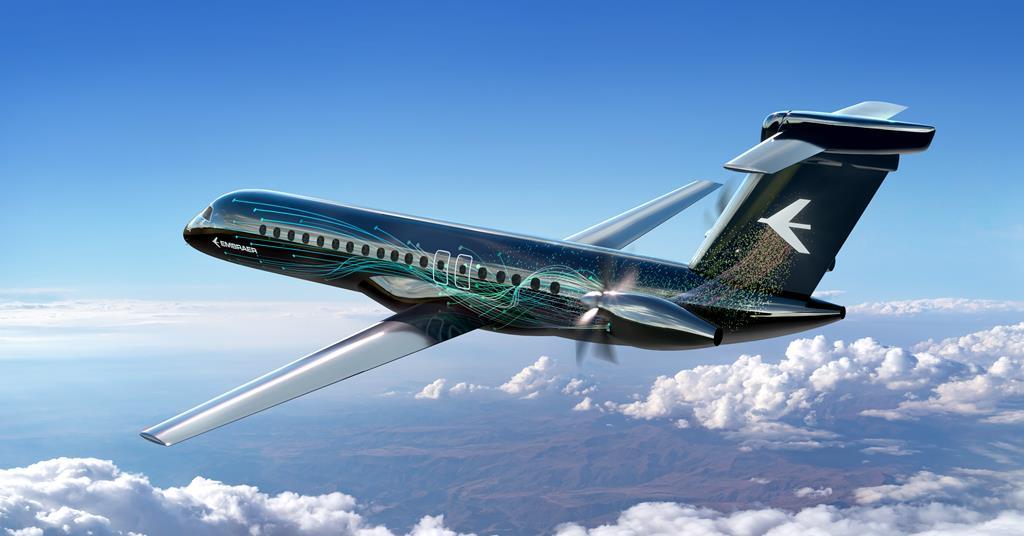
Brazil's Embraer is in talks with potential partners in India and elsewhere over proposals for a new turboprop aircraft, which could launch in the middle of 2023, the planemaker's commercial chief said on Tuesday, May 10.
Embraer is also in detailed talks with engine makers about the proposed new regional airplane, which would seek to penetrate a market dominated by Franco-Italian ATR, Embraer Commercial Aviation Chief Executive Arjan Meijer told Reuters at the Airline Economics conference.
With DeHavilland Canada halting production of the Dash 8-400 planes and ATR not having made significant technological advancements in ATR 42 and 72 aircraft, Embraer sees the opportunity for a new advanced product in the regional turboprop segment.
Embraer is in talks with India for collaboration on its upcoming turboprop aircraft
Embraer has been discussing returning to the turboprop sector since 2017 as it looks to expand its portfolio.
It said in 2020 it could opt for a combination of industrial and financial backing, though some analysts expect a more traditional approach based on risk-sharing deals with suppliers.
"We're powering on with that. That's going to be a big decision we have to make. For the launch we are looking at mid-2023," he added. He said that such a plane could enter service in late 2027 or early 2028 in an interview.
Embraer has issued a request for proposals to engine makers and expects to decide by the end of the year.
Embraer sees a total market of 700 such conversions in the next 20 years and aims to capture 20% of that.
The Brazilian planemaker earlier announced the first leasing customer, Nordic Aviation Capital, for a project to convert Embraer E-Jet airliners to freighters NAC and Embraer have reached an agreement on 10 aircraft with the first aircraft in 2024.
Embraer sees a total market for 700 such conversions in the next 20 years and aims to capture 20% of that, Meijer said. "Cargo is the big thing right now. We all order more from home so there are many more deliveries to your front door. The pandemic has accelerated these trends across the world," he added.
Like most manufacturers, Embraer is seeing supply chain problems but expects that to result in supply chains for manufacturing and other industries being shortened overall.
Embraer is seeing supply chain problems but expects that to result in supply chains for manufacturing and other industries being shortened overall.
That, in turn, should boost demand for shorter trips that are suited to the regional market served by Embraer, Meijer said.
In the coming years, India is set to become the manufacturing hub for aerospace technologies. India's Tata Group has already collaborated with Boeing and Airbus for Tata Boeing Space Limited and Indian Air Force respectively.
Embraer (Empresa Brasileira de Aeronáutica SA) is based in São José dos Campos, Brazil and was founded in 1969 as a government aerospace initiative and then privatised in December 1994.
Read next
Next-gen all-electric drone featuring ion-propulsion technology with a very low acoustic profile - is it really that silent?
Prashant-prabhakar
11 May 2022
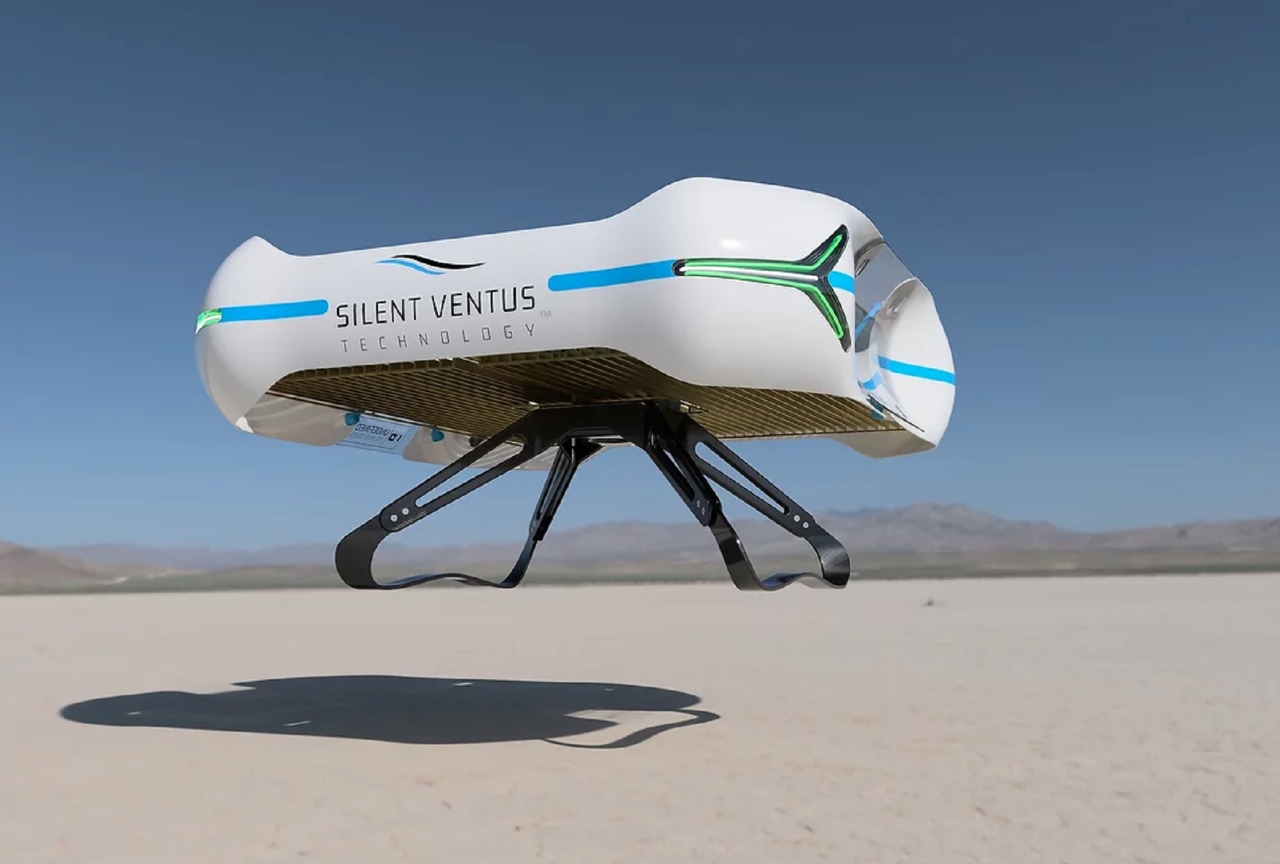
If there's anything not-so-pleasing about a drone, it's the sound pollution caused by the propellors rendering the otherwise extremely useful aircraft, noisy.
I am concerned that drones are taking to the air without a lot of thought for the ears of people on the ground. Will there be a weight limit on delivery-drone payloads? Who will monitor the sound levels, and how? Should there be a curfew on hours of operation? There must be a reason companies don’t include the sound of the drone in advertising materials – and it’s probably not because they sound so nice. In this ad, the drone seems silentGarth Paine-Associate Professor of Digital Sound and Interactive Media, Arizona State University
An electric drone with absolutely zero noise levels and emissions might seem to exist in a utopian world, not in ours? Or, can they?
If reports are anything to go by, "Undefined Technologies"- a Florida-based tech startup, unveiled a new aesthetic design of its silent eVTOL drone last month, dubbed "Silent Ventus". It is unlike any other drone you've seen before and is reportedly powered by ion propulsion- touted to produce a very minimum noise signature.
Auto Evolution
Silent Ventus is a vivid example of our intent of creating a sustainable, progressive, and less-noisy urban environment. The design brings us closer to our final product and enables us to showcase the dual-use of our technology said Tomas Pribanic, Founder and CEO of Undefined Technologies
Tomas Pribanic | Commercial UAV News
Now for the main question- what is ion propulsion and is it practically possible?
Ion Propulsion
What is ion propulsion?
Theoretically, an ion thruster ionizes propellant by adding or removing electrons to produce ions. Most thrusters ionize propellant by electron bombardment-a high-energy electron (negative charge) collides with a propellant atom (neutral charge), releasing electrons from the propellant atom and resulting in a positively charged ion. In simple words, Ion thrusters eject ions instead of combustion gases to create thrust.
Illustrative | Online Star Register
Ideally, Ion thrust engines are practical only in the vacuum of space and cannot take vehicles through the atmosphere because ion engines do not work in the presence of ions outside the engine. Furthermore, the engine's minuscule thrust cannot overcome any significant air resistance.
Illustrative | NASA
Coming back to "Silent Ventus"- this concept vehicle reportedly uses proprietary technology to fully activate the ion cloud surrounding the craft, which is believed to generate high levels of ion thrust in atmospheric air, thereby pushing the flight to a near-silence environment.
According to the stats displayed on the website, commercial delivery drones generate between 85 and 96 dB of noise, while U.S. regulations allow for noise levels of 50 to 70 dB in residential, industrial, and commercial zones.
With the commercialization of this aircraft, the company hopes of achieving noise levels below 70 dB and has already shared footage of its prototypes completing test flight missions of up to two and a half minutes at below 85 dB.
https://www.youtube.com/watch?v=iihprC5Huf4
The company's ultimate goal is to slash the noise levels even further while at the same time, increasing the overall flight time, thereby making it feasible for a variety of applications, from last-mile delivery to civil, military operations and more.
Although, though much is not known about the "proprietary ion propulsion technology" at the moment, what we do know is that it uses “innovative physics, making it viable to use ion propulsion in atmospheric conditions with the superior performance of up to 160% compared to current ion thruster technologies.”
Scientifically, atmospheric ion propulsion usually generates minuscule thrust hence if there's an appreciable amount of thrust generated, this truly would be revolutionary in the world of drone propulsion.
SOURCE(s)
COVER: Auto Evolution


Comment